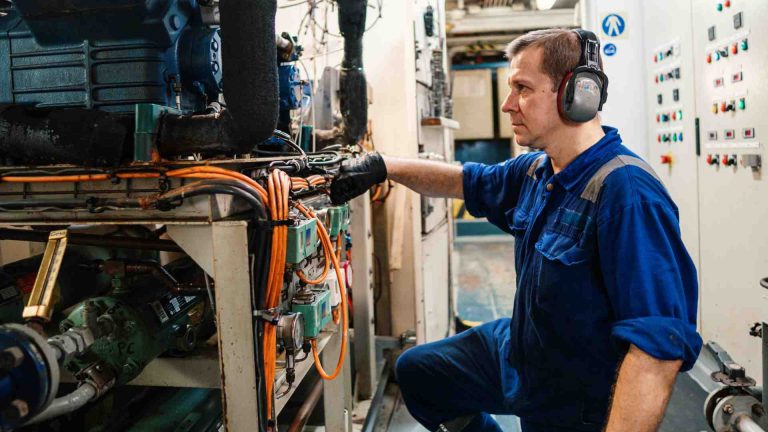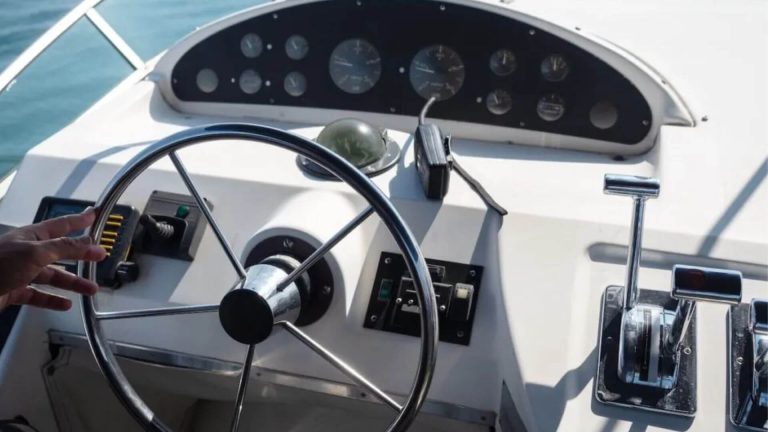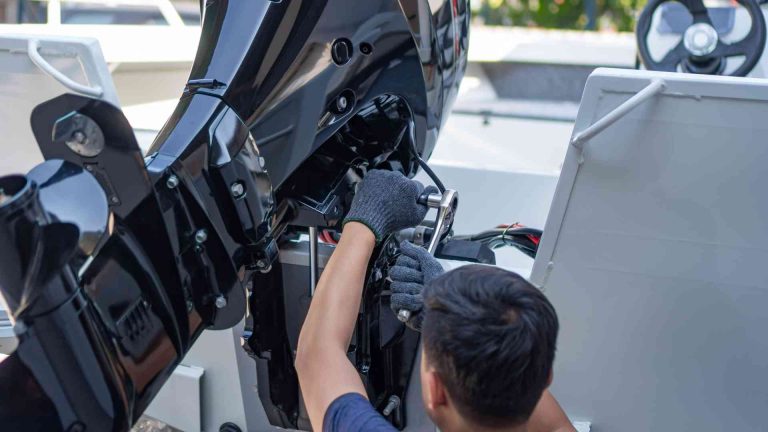3 Bank Battery Chargers: Ultimate Guide
For anyone who relies on multiple batteries—whether on a boat, RV, or off-grid setup—a 3-bank battery charger is a game-changer. These devices streamline the process of charging and maintaining three batteries simultaneously, ensuring reliable power and extended battery life. This comprehensive guide explores everything you need to know about 3-bank battery chargers: what they are, why they’re essential, how to choose the right one, and how to use them effectively. Whether you’re a boating enthusiast or an off-grid adventurer, this article will equip you with the knowledge to make an informed decision.
What is a 3-Bank Battery Charger?
A 3-bank battery charger is a specialized device designed to charge and maintain three separate 12V batteries at the same time. Each “bank” refers to an independent charging output, allowing the charger to deliver a tailored charge to each connected battery. This is particularly useful in applications like marine vessels, where boats often rely on multiple batteries—such as one starting battery for the engine and two deep-cycle batteries for trolling motors or accessories.
The charger works by splitting its total current output into three equal parts, ensuring each battery charges at a consistent rate. For example, a 30A 3-bank charger delivers 10A to each battery. Modern 3-bank chargers often incorporate smart technology, adjusting the charge based on the battery’s condition to prevent overcharging or damage.
Why You Need a 3-Bank Battery Charger
Multi-Battery Systems Demand Efficient Charging
If you operate a boat, RV, or off-grid setup with multiple batteries, keeping them all charged can be a logistical challenge. A 3-bank charger simplifies this by handling all three batteries at once. For instance, a boat might have a cranking battery to start the engine and two deep-cycle batteries for powering electronics or trolling motors. With a 3-bank charger, you can ensure all three are ready without swapping cables or using multiple chargers.
Time and Energy Savings
Charging three batteries individually takes time and effort. A 3-bank charger cuts this process down significantly by charging all batteries simultaneously. This efficiency not only saves time but also reduces energy waste, making it a practical choice for frequent users.
Prolonged Battery Life
Smart 3-bank chargers often include features like multi-stage charging (bulk, absorption, and float stages) and overcharge protection. These prevent damage from overcharging or undercharging, extending the lifespan of your batteries and saving you money on replacements.
Real-World Application
Consider a boater who spends long days on the water. A dead battery could strand them far from shore. A 3-bank charger ensures all batteries—starting, trolling, and auxiliary—are fully charged before departure, providing peace of mind and uninterrupted power.
Key Factors to Consider When Choosing a 3-Bank Battery Charger
Selecting the right 3-bank charger requires balancing your specific needs with the charger’s capabilities. Here are the critical factors to evaluate:
1. Amp Rating
The amp rating determines how much current the charger delivers to each battery. To choose the right rating, calculate 10% of your battery system’s total amp-hour (Ah) capacity. For example:
- A 100Ah battery system needs at least 10A per bank.
- A 300Ah system requires 30A total, or 10A per bank in a 3-bank setup.
Higher amperage means faster charging, but ensure it matches your batteries’ capacity to avoid strain.
2. Voltage Compatibility
Most 3-bank chargers are designed for 12V batteries, common in marine and RV applications. Ensure the charger’s output voltage matches your batteries’ requirements. For systems wired in series (e.g., 24V trolling motor setups), confirm the charger supports the total system voltage or individual battery voltage.
3. Supported Battery Types
Different batteries require specific charging profiles:
- Lead-Acid (Wet, AGM, Gel): Common in boats and RVs, these need chargers with compatible voltage settings (typically 14.4V-14.7V).
- Lithium (LiFePO4): Increasingly popular for their lightweight and efficiency, these require precise charging (e.g., 14.6V) and often a BMS jump-start feature.
Check the charger’s specifications to ensure it supports your battery chemistry.
4. Durability and Construction
For marine or outdoor use, the charger must withstand harsh conditions. Look for:
- Waterproofing: IP65 or higher ratings protect against water, salt, and dust.
- Shock Resistance: Sturdy construction ensures longevity under vibration or impact.
A well-built charger lasts longer and delivers consistent performance.
5. Operating Temperature
Temperature affects charging efficiency. In hot climates, opt for a charger with low-voltage settings or temperature compensation to prevent overcharging. In colder regions, a higher-voltage option may be better, but always prioritize voltage compatibility first.
6. Safety Features
Essential safety features include:
- Overcharge Protection: Prevents battery damage.
- Short-Circuit Protection: Guards against electrical faults.
- Reverse Polarity Protection: Avoids damage from incorrect connections.
- Temperature Sensors: Adjusts charging based on ambient conditions.
These features protect both the charger and your batteries.
7. Ease of Installation and Use
Consider the charger’s size, mounting options, and cable length. Compact designs fit tight spaces, while longer cables (6ft or more) accommodate dispersed battery locations.
Key Factors to Consider:
| Feature | What to Look For |
|---|---|
| Amp Rating | 10A per bank for 100Ah batteries (10% rule). Higher amps = faster charging. |
| Voltage Compatibility | Must match battery voltage (12V, 24V, or 36V). |
| Battery Type Support | AGM, Gel, Lithium (LiFePO4), or Flooded lead-acid. |
| Waterproof Rating | IP65 or higher for marine environments. |
| Smart Charging | Multi-stage charging (bulk, absorption, float). |
| Safety Features | Overcharge protection, spark-proof, reverse polarity. |
Example:
- For three 100Ah AGM batteries, a 30A (10A per bank) charger is ideal.
How to Install a 3-Bank Battery Charger on Your Boat
Proper installation ensures optimal performance and safety. Here’s a step-by-step guide for a typical marine setup with one 12V cranking battery and a 24V trolling motor system (two 12V batteries in series):
Tools and Materials
- 3-bank battery charger
- Screws and washers
- Screwdriver
- One 12V cranking battery
- Two 12V deep-cycle batteries
- Boat’s battery compartment
Installation Steps
- Locate the Battery Compartment: Open your boat’s battery compartment or designated charging area.
- Mount the Charger: Secure the charger to a stable surface (e.g., center compartment plate) using screws and washers.
- Position the Batteries: Place the two deep-cycle batteries in one compartment (for the 24V system) and the cranking battery in another.
- Connect the 24V System:
- Link the two deep-cycle batteries in series: positive of the first to negative of the second.
- Connect the boat’s trolling motor cables to the 24V system (positive to the first battery’s positive, negative to the second battery’s negative).
- Wire the Charger:
- Attach Charger Cable #2 (positive and negative) to the first deep-cycle battery.
- Attach Charger Cable #3 to the second deep-cycle battery.
- Attach Charger Cable #1 to the cranking battery.
- Secure Connections: Bolt down all terminals tightly to prevent loosening.
- Test the Setup: Plug the charger into an outlet to confirm it powers on and begins charging.
Table: Charger Connection Specifications
| Battery | Charger Cable | Connection Points |
|---|---|---|
| Cranking | #1 | Positive to +, Negative to – |
| Deep-Cycle 1 | #2 | Positive to +, Negative to – |
| Deep-Cycle 2 | #3 | Positive to +, Negative to – |
How to Use a 3-Bank Battery Charger Safely
Once installed, using the charger is straightforward but requires attention to safety:
- Plug In: Connect the charger to a stable AC power source.
- Monitor Charging: Check the LED indicators (e.g., red for charging, green for fully charged).
- Wait for Completion: Allow the batteries to charge until all indicators show full (typically 3-10 hours, depending on capacity and amp rating).
- Disconnect: Unplug the charger from the outlet once charging is complete.
Safety Tips
- Ventilation: Charge in a well-ventilated area to dissipate heat and gases.
- Cable Handling: Use only the provided cables to avoid electrical issues.
- Avoid Modifications: Do not alter the charger; contact the manufacturer for repairs.
- Weather Precautions: Avoid use during thunderstorms to prevent surges.
Maintenance Tips for Your 3-Bank Battery Charger
To maximize lifespan and performance:
- Read the Manual: Follow manufacturer instructions for specific settings.
- Match Battery Types: Use the same battery type (e.g., all AGM) across banks to avoid compatibility issues.
- Keep Clean: Wipe down the charger to remove dust or salt buildup.
- Inspect Regularly: Check cables and terminals for corrosion or wear.
Top 3-Bank Battery Charger Recommendation
The LiTime 3-Bank 12V 10A Battery Charger stands out as a top choice for its versatility, efficiency, and safety features.
Key Specifications
- Output: 10A per bank (30A total)
- Input Voltage: 90-260V AC, 47-63Hz
- Output Voltages: 14.6V (LiFePO4), 16.8V (NCM), 14.7V (Lead-Acid)
- Compatibility: LiFePO4, NCM, Lead-Acid
- Safety Features: Over-temperature, reverse polarity, short-circuit, IP65 waterproof
- Certifications: CE, FC, RoHS
Why It’s Great
- Fast Charging: Charges three batteries in as little as 3-5 hours.
- Versatility: Works with multiple battery types and global power sources.
- Durability: IP65 rating ensures resistance to water and dust.
- BMS Jump-Start: Revives lithium batteries in 3 seconds.
This charger is ideal for boaters, RV owners, and off-grid users needing a reliable, all-in-one solution.
Understanding Battery Basics for Charger Compatibility
To pair your 3-bank charger with the right batteries or devices, it’s helpful to understand key terms:
Milliamp-Hours (mAh) and Amp-Hours (Ah)
- Definition: Measures battery capacity—how much energy it stores.
- Example: A 6000mAh (6Ah) battery holds less charge than a 10000mAh (10Ah) battery. For a 10A charger, a 6Ah battery charges in ~36 minutes, while a 10Ah takes ~1 hour.
Voltage (V)
- Definition: The electrical potential a battery or charger delivers.
- Example: A 5V/2A device needs a charger outputting at least 5V and 2A. A 12V 3-bank charger is for 12V batteries, not 5V devices.
Amps (A)
- Definition: The rate of current flow.
- Example: A 5V/1A charger delivers power slower than a 5V/2.4A charger. Match the device’s minimum amp requirement (e.g., 2A) to avoid slow charging or damage.
Matching Chargers to Devices
- For a device needing 5V/2A, use a power bank with at least 5V/2A output. A 3-bank 12V charger isn’t suitable—it’s for larger batteries, not small electronics.
Cable Compatibility
- USB-A to Micro-USB: Fine for older devices but slower than USB-C.
- USB-C to Lightning: Best for newer iPhones; older USB-A to Lightning cables work but may charge slower.
FAQs About 3-Bank Battery Chargers
Limitation: Best for 3-battery systems; less efficient for fewer or more.
Cost: Ranges from $100-$150 (budget) to $350-$680 (high-end).
Charging time depends on battery capacity and charger amperage:
Formula: Battery Ah ÷ Charger A = Hours
Example: 100Ah battery with 10A per bank = 10 hours.
Yes, if voltage and amperage match your batteries and safety features are present.
Yes, but ensure settings align with each battery’s needs.
Conclusion
A 3-bank battery charger is an indispensable tool for managing multiple batteries efficiently. Whether you’re on the water or off the grid, it saves time, extends battery life, and ensures reliable power. By considering amp rating, voltage, battery type, and safety features, you can select the perfect charger for your needs. The LiTime 3-Bank 12V 10A Charger exemplifies the best in performance and durability, making it a standout choice for modern adventurers.
- Amp rating (10% of battery capacity).
- Battery compatibility (AGM, Lithium, etc.).
- Durability (IP65+ waterproofing).
With this guide, you’re ready to power up confidently—wherever your journey takes you.
Share Four Questions to Answer as you Start Shopping for a New Boat with your friends and leave a comment below with your thoughts.
Read Beautiful Boat Images 4K HD Wallpapers until we meet in the next article.






